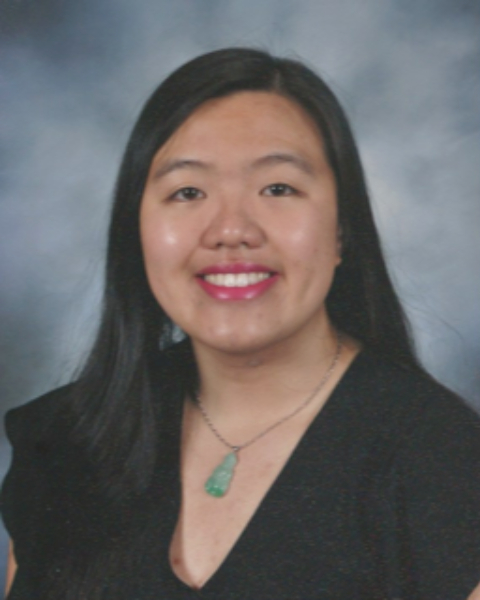PQA 07 - PQA 07 Gastrointestinal Cancer and Sarcoma/Cutaneous Tumors Poster Q&A
2994 - Predictive Value of Post-Radiotherapy PET with or without MRI to Identify Residual Disease in Patients with Anal Squamous Cell Carcinoma
Tuesday, October 1, 2024
12:45 PM - 2:00 PM ET
Location: Hall C
Screen: 3

Sylvia Choo, BA
University of South Florida College of Medicine
Tampa, FL
Presenter(s)
J. E. Henning1, S. Choo1, P. Singh1, A. Stefanou2, S. Felder2, S. Dessureault2, J. Sanchez2, J. M. Frakes3, S. Hoffe3, and R. F. Palm3; 1University of South Florida Morsani College of Medicine, Tampa, FL, 2GI Oncology, Moffitt Cancer Center, Tampa, FL, 3H. Lee Moffitt Cancer Center and Research Institute, Department of Radiation Oncology, Tampa, FL
Purpose/Objective(s): PET/CT is considered standard of care in initial staging for patients with anal squamous cell carcinoma (ASCC) and more frequently MRI has been used for initial disease evaluation and for radiotherapy (RT) treatment planning. The foundation of post-RT assessment is a physical examination with anoscopy, however MRI is often considered for patients with locally advanced disease. There is limited data regarding the predictive value of routine PET and MRI imaging in the 6-month post-treatment window. We hypothesized that both PET/CT and MRI would improve accuracy of disease assessment in the post-treatment period. Materials/
Methods: This is an IRB approved, single-institution retrospective study of patients treated with definitive RT for ASCC from 2006 – 2023. If medically eligible, patients were treated per the Nigro protocol. Patients were included in this analysis if they underwent PET/CT with or without pelvic MRI within 6 months of completion of RT. PET standard uptake value max (SUVmax) of the primary site was recorded as a continuous variable. Patients who underwent MRI were codified as no evidence of disease (NED) with tumor regression grade (TRG) 1 or 2 and no measurable disease versus as residual disease (RD) with TRG 3 – 5 or the presence of any measurable viable tumor. Descriptive statistics and Mann-Whitney-U tests were performed in IBM statistical software.
Results: A total of 200 patients had a post-RT PET and were eligible for analysis. The majority were female (75.5%) with 46% (n=92) staged as T3/T4 disease and 47% (n=94) as clinically node positive at diagnosis and treated with a median RT dose to primary disease of 54 Gy. The crude local failure rate was 8.5% (n=17) occurring at a median of 6.3 months from RT. A cohort of patients (n=49) had both PET and MRI imaging at a median of 96 (range: 11 – 189) days from RT. The majority of this cohort (n = 31, 63%) were deemed as radiographic NED with the remainder RD. There were 4 local recurrences (8.2%) within this cohort at 3.1, 4.3, 10.8 and 23.4 months from RT. The post-treatment MRI demonstrated 50% sensitivity, 11% positive predictive value, 64% specificity and 94% negative predictive value. There was no significant difference in median post-treatment SUVmax in the total cohort for patients without or with local recurrence at 3.4 and 5.2, respectively (P = 0.061).
Conclusion: Due to the low prevalence of local failure after RT for ASCC, our results do not support the routine use of post-RT MRI in assessment of residual disease. However, in the setting of an equivocal physical exam there may be value with MRI with diffusion weighted imaging to clinical decision making.
Purpose/Objective(s): PET/CT is considered standard of care in initial staging for patients with anal squamous cell carcinoma (ASCC) and more frequently MRI has been used for initial disease evaluation and for radiotherapy (RT) treatment planning. The foundation of post-RT assessment is a physical examination with anoscopy, however MRI is often considered for patients with locally advanced disease. There is limited data regarding the predictive value of routine PET and MRI imaging in the 6-month post-treatment window. We hypothesized that both PET/CT and MRI would improve accuracy of disease assessment in the post-treatment period. Materials/
Methods: This is an IRB approved, single-institution retrospective study of patients treated with definitive RT for ASCC from 2006 – 2023. If medically eligible, patients were treated per the Nigro protocol. Patients were included in this analysis if they underwent PET/CT with or without pelvic MRI within 6 months of completion of RT. PET standard uptake value max (SUVmax) of the primary site was recorded as a continuous variable. Patients who underwent MRI were codified as no evidence of disease (NED) with tumor regression grade (TRG) 1 or 2 and no measurable disease versus as residual disease (RD) with TRG 3 – 5 or the presence of any measurable viable tumor. Descriptive statistics and Mann-Whitney-U tests were performed in IBM statistical software.
Results: A total of 200 patients had a post-RT PET and were eligible for analysis. The majority were female (75.5%) with 46% (n=92) staged as T3/T4 disease and 47% (n=94) as clinically node positive at diagnosis and treated with a median RT dose to primary disease of 54 Gy. The crude local failure rate was 8.5% (n=17) occurring at a median of 6.3 months from RT. A cohort of patients (n=49) had both PET and MRI imaging at a median of 96 (range: 11 – 189) days from RT. The majority of this cohort (n = 31, 63%) were deemed as radiographic NED with the remainder RD. There were 4 local recurrences (8.2%) within this cohort at 3.1, 4.3, 10.8 and 23.4 months from RT. The post-treatment MRI demonstrated 50% sensitivity, 11% positive predictive value, 64% specificity and 94% negative predictive value. There was no significant difference in median post-treatment SUVmax in the total cohort for patients without or with local recurrence at 3.4 and 5.2, respectively (P = 0.061).
Conclusion: Due to the low prevalence of local failure after RT for ASCC, our results do not support the routine use of post-RT MRI in assessment of residual disease. However, in the setting of an equivocal physical exam there may be value with MRI with diffusion weighted imaging to clinical decision making.
